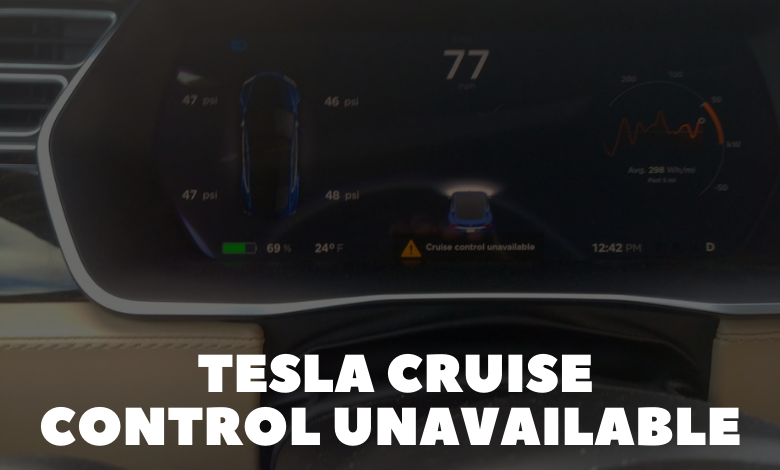Tesla Cruise Control Unavailable

Are you a delighted Tesla proprietor grappling with the well-known “Tesla cruise control unavailable” message. Encountering this hiccup in the Autopilot feature, particularly the Traffic-Aware cruise control, can be vexing. Despite the car’s visualizations functioning normally, cruise control remains inaccessible. This can be exasperating for those reliant on the feature for a more relaxed driving experience. But fret not, there are solutions to this quandary.
In this piece, we’ll guide you through resolving the issue of Tesla cruise control being unavailable. We’ll delineate the common causes behind this error and furnish you with step-by-step instructions on rectifying it.
According to the official Tesla website, the Autopilot feature may intermittently become unavailable due to several reasons. These encompass low visibility of radar or sensors, debris or dirt on the camera surface, glare from bright sunlight or other light sources, condensation on the camera surface, and incomplete camera calibration. While the feature typically restores itself during subsequent drives, there are instances where manual configurations become imperative.
It’s crucial to note that even when cruise control is unavailable, it doesn’t impact your vehicle’s drivability, ensuring you can continue your journey safely. However, addressing the unavailable cruise control in your Tesla is pivotal.
Here are some straightforward ways to troubleshoot the Tesla Cruise control unavailable:
1. Clear Radar & Sensor Obstruction
Ensure the front radar, located within the front bumper, has unobstructed visibility. Accumulated debris, mud, or snow can impede the radar’s function. Thoroughly clean the sensor to remove contaminants.
2. Clean the Front Camera
The cruise control relies on the front camera, and unclear visibility can prevent engagement. Eliminate any obstructions or conditions affecting the camera’s visibility. For condensation inside the camera enclosures, use the front windshield defroster and direct air vents towards the door pillar cameras.
3. Update Your Tesla
Regularly update your Tesla’s software to ensure optimal functionality, as older software versions may pose challenges. Downloading new updates can fix bugs and errors related to Autopilot features.
4. Charge Your Tesla
Low battery levels can lead to the unavailability of the cruise control system to conserve energy. Charging your Tesla can resolve this issue.
5. Calibrate Cameras & Reboot the System
Before cruise control becomes available, the camera must self-calibrate. This process takes about 20-25 miles. Clear calibration by touching Controls > Service > Camera Calibration > Clear Calibration. After calibrating, reboot your Tesla.
6. Cool Down Tesla System
Prevent the shutdown of features, including cruise control, due to overheating by allowing the Tesla system to cool down.
7. Letting it Sleep Overnight
A soft reboot by letting the Tesla sleep overnight may resolve software-related issues causing cruise control unavailability.
It’s paramount to promptly address the unavailability of Tesla’s cruise control system to fully leverage this advanced feature for an enhanced driving experience.
